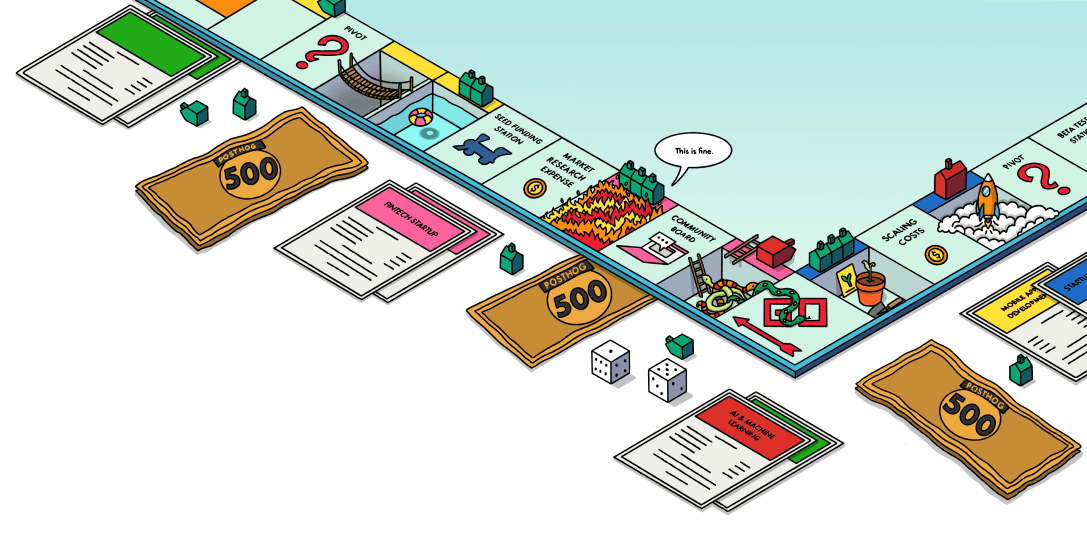
In-depth: PostHog vs Statsig
Contents
PostHog and Statsig both offer A/B testing and feature flags, but they're different in two important ways:
Statsig is a dedicated testing platform that offers advanced statistical methods for running tests. It's ideal for data scientists and growth teams in large enterprises who need to conduct complex A/B testing.
PostHog is an all-in-one platform for engineers and product teams who want a more straightforward approach to experimentation. In addition to A/B testing, it offers feature flags, advanced product analytics, session replays, surveys, and more.
This post compares their platforms, experimentation features, pricing, and more.
How is PostHog different?
1. We're an all-in-one platform
PostHog brings together all the tools engineers need for testing, releasing, and measuring the success of new features. Feature flags and A/B testing are only part of a suite of tools PostHog offers.

PostHog combines usage, performance, and behavioral data with flags and experiments. Having all these dev tools together enables you to do better analysis of shipped features and make better decisions about what you are building next.
2. We're open source and transparent
PostHog is built with transparency at its core. Not only do we work in the open and give full access to our source code, we also enable others to build integrations or other services on top of PostHog, open their own PRs, or give feedback on our roadmap. PostHog's open app framework makes it easy to integrate internal tools, an advantage closed-source products like Statsig can't offer.
3. We ship weirdly fast
We update our changelog with a recap of new features every week, and often there’s even more in beta testing. We work hard to keep PostHog on the cutting edge and respond quickly to feedback from our users.
Comparing PostHog and Statsig
Platform
Experimentation
Both tools enable you to run A/B/n and multivariate tests, set custom goals, and calculate statistical significance, but:
Statsig offers some more advanced testing techniques, such as multi-armed bandit, mutually exclusive, and holdout tests. It also lets you choose between Bayesian and Frequentist engines, and supports Bonferroni correction.
PostHog provides a more intuitive user interface and simpler setup process, making it ideal for teams who prefer a more straightforward approach to experimentation, and tight integration with its other powerful tools.
- Holdout testing: It's possible to run a holdout test across multiple A/B tests in PostHog. However, the process is more manual than Statsig's, which has built-in functionality to do this.
Feature management
While both offer the core features you need, Statsig's feature flags are boolean-based, while PostHog supports multivariate flags with JSON payloads and boolean flags. This provides greater flexibility in testing and deploying different variations of a feature, making them more suitable for complex rollouts.
Product analytics
Both PostHog and Statsig offer the functionality you expect from product analytics tools, such as dashboards, graphs, and funnels. However:
PostHog provides deep insights into how users are interacting with your product. It includes features such as lifecycle, stickiness, correlation, and retention analysis.
Statsig does provide some additional insights, such as retention analysis, but its main focus is to use product analytics to set up metrics to run A/B tests on.
Integrations
Both PostHog and Statsig have a range of integrations that enable them to import, export, enhance, and make use of data, but PostHog being open source means you can create your own integration.
Below is a sample comparison of PostHog and Statsig's integrations. Be sure to checkout PostHog's full list of integrations.
Security and compliance
Both PostHog and Statsig enable companies to remain secure and compliant with privacy regulations. Companies can customize the levels of user privacy related to these platforms to their needs.
Frequently asked questions
Who is PostHog useful for?
PostHog is built for startups and their engineers. It provides all the tools startups need to build successful products. The people who find PostHog most useful are founders, product engineers, and growth engineers.
Companies that use PostHog feature flags and experiments include Y Combinator, Vendasta, and AssemblyAI.
Who is Statsig useful for?
Statsig is for teams that require advanced experimentation capabilities and more sophisticated statistical methods. It's ideal for data scientists and growth teams who need to conduct complex A/B testing.
Teams that frequently run multiple experiments on the same surface concurrently will appreciate Statsig's ability to handle mutually exclusive experiments and implement Bonferroni correction.
Can I migrate from Statsig to PostHog?
Yes. See our Statsig to PostHog migration guide for more.
How much does PostHog cost?
Feature flags and experiments are free for up to 1M requests per month. Beyond that, it costs $0.0001/request (or $1 per 10,000 requests). There are discounts for high-volume users, non-profits, and startups.
Other products, like product analytics and session replay, have separate but similarly structured pricing.
How much does Statsig cost?
Statsig is free up to 1M requests per month. Thereafter, it's $150 per month for up to 5 million metered events, and then $50 per every 1 million events thereafter.
Does PostHog offer discounts for nonprofits and startups?
Yes, PostHog offers both. Nonprofit organizations can contact our team and are usually eligible for a discount, while startups can sign up for $50,000 of free credit (and a host of other perks) in the PostHog for Startups program.









